Imagine stepping into your backyard and being greeted by a stunning canopy that transforms your outdoor space into a personal paradise. Whether you’re a beginner dreaming of your first outdoor project or a seasoned homeowner looking to refresh your space, our guide, “11 Backyard Canopy Ideas for Your Next Project,” is packed with inspiration and practical advice to help you create that perfect retreat. This list is your key to unlocking not only aesthetic charm but also functional comfort, turning your backyard into an enchanting extension of your home.
From enhancing your outdoor gatherings with style to providing much-needed shade during sunny days, these canopy ideas offer a blend of beauty and practicality. You’ll discover how to effortlessly elevate your outdoor experience, gaining both relaxation and protection from the elements. With our guide in hand, you’ll feel confident and excited to embark on a project that brings endless joy and satisfaction to your outdoor living.
Choose Weather-Resistant Canopy Materials
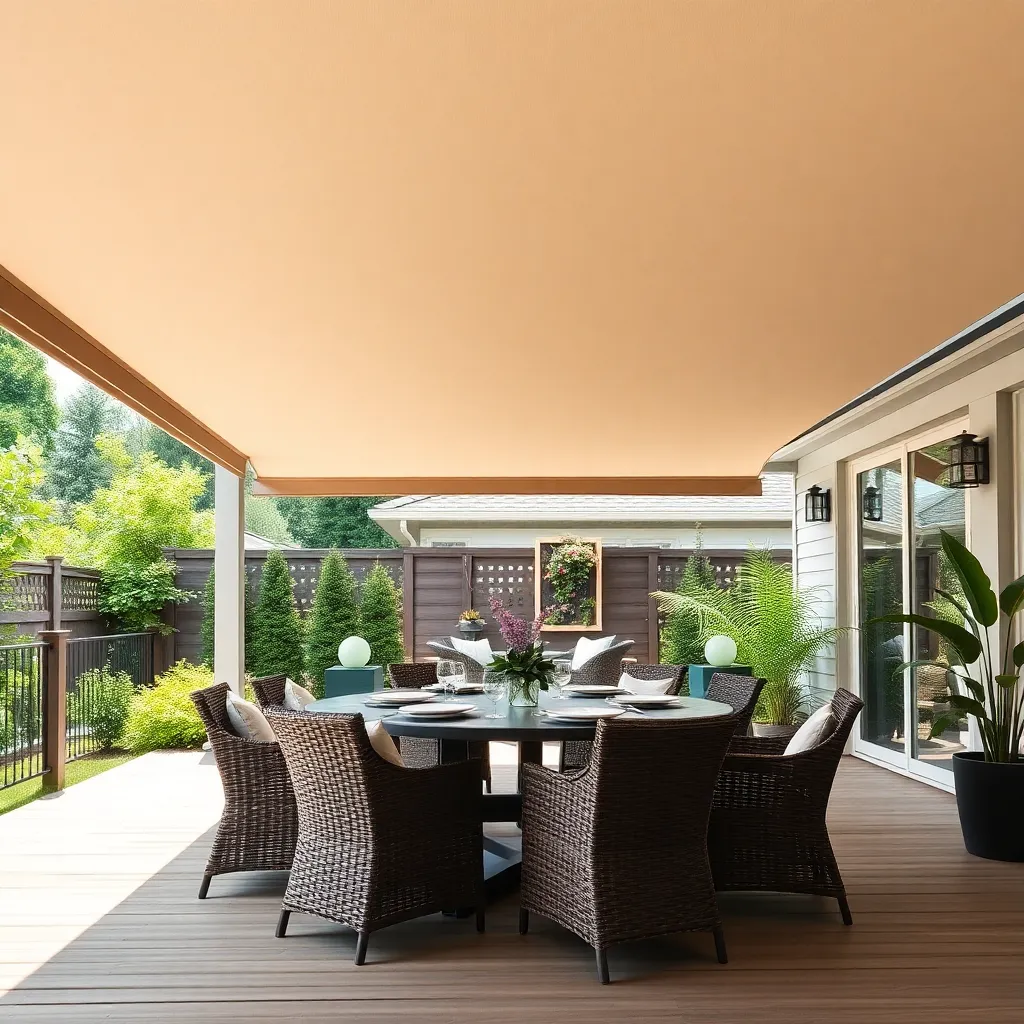
When choosing materials for your backyard canopy, focus on those that offer durability and protection. Polyester and acrylic fabrics are excellent choices due to their weather-resistant properties and UV protection. For a more robust structure, consider using a galvanized steel or aluminum frame, which can withstand strong winds and resist rust. Beginners can start with a simple pop-up design, while more experienced DIYers might explore building a permanent pergola or gazebo.
For added longevity and style, look for canopies with reinforced seams and coatings that repel water and mildew. Sunbrella fabric is a top pick among seasoned gardeners for its fade-resistant qualities and wide range of colors. When planning your design, ensure the canopy is slightly sloped to allow rainwater to run off, reducing the risk of water pooling and damage.
- Opt for neutral or earthy tones to blend seamlessly with the natural environment.
- Consider adding detachable side panels for extra shade and wind protection.
Incorporate Adjustable Shade Mechanisms
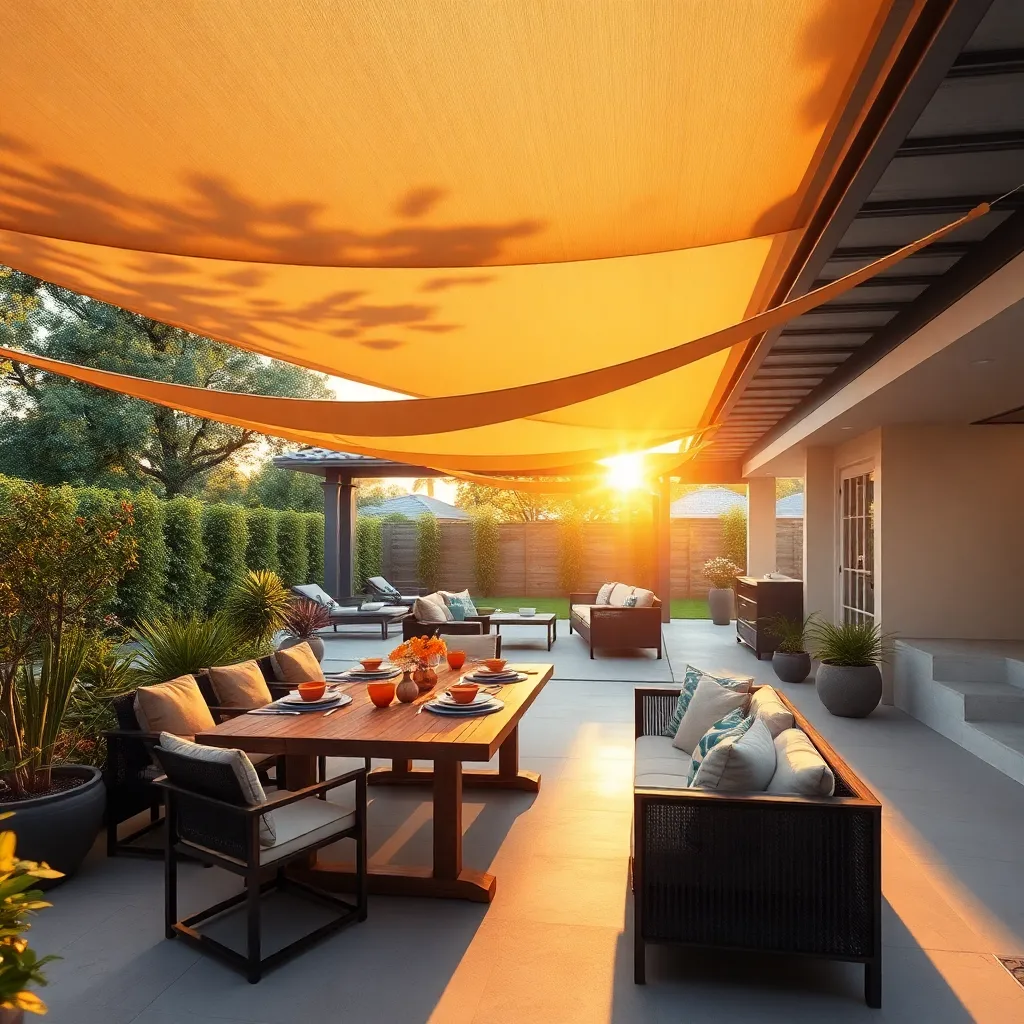
Integrating adjustable shade mechanisms into your backyard canopy can significantly enhance its functionality. Consider installing retractable awnings or adjustable louvered roofs, which allow you to control the amount of sunlight filtering through. Retractable awnings are a versatile option, offering shade when needed and retracting to let in light during cooler parts of the day. Alternatively, louvered roofs provide a modern touch, with adjustable panels that can be angled to block or let in sunlight, perfect for adapting to changing weather conditions.
For those looking to blend style with utility, motorized options offer ease of use and a sleek aesthetic. Choose weather-resistant materials like aluminum or high-quality outdoor fabric that can withstand the elements and require minimal maintenance. Beginner tip: Start with a simple manual system to understand your shading needs before upgrading. Advanced advice: Consider integrating smart technology, allowing you to adjust your shade remotely or even automatically, based on weather sensors, for a truly hands-free experience.
Enhance Aesthetic with Draped Fabrics
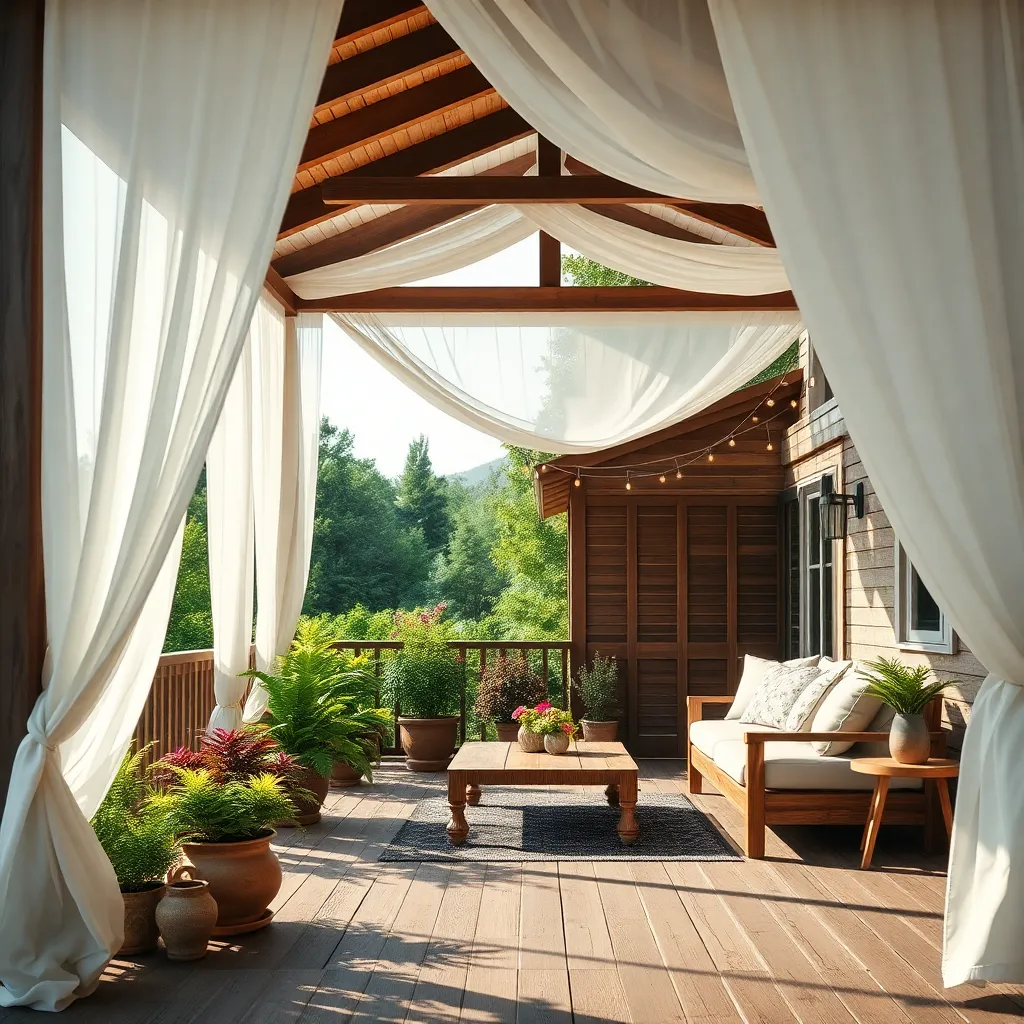
To add a touch of elegance and charm to your outdoor canopy, consider using draped fabrics. This technique is both simple and effective, offering a way to create a cozy and inviting atmosphere. Start by selecting weather-resistant materials such as acrylic or polyester that are specifically designed for outdoor use. These fabrics not only withstand the elements but also come in a variety of colors and patterns, allowing you to customize the look to match your personal style.
For installation, use strong, rust-resistant hardware like stainless steel hooks and grommets to secure the fabric. You can drape the fabric across the canopy structure or let it billow slightly for a more relaxed appearance. As an advanced tip, incorporate curtain rods or wire cables to easily slide the fabric open or closed, offering flexible shade options. Remember to measure your space accurately to ensure you purchase enough fabric for a seamless look. With these elements in place, your backyard will boast a sophisticated and personalized aesthetic.
Utilize Freestanding Canopy Structures
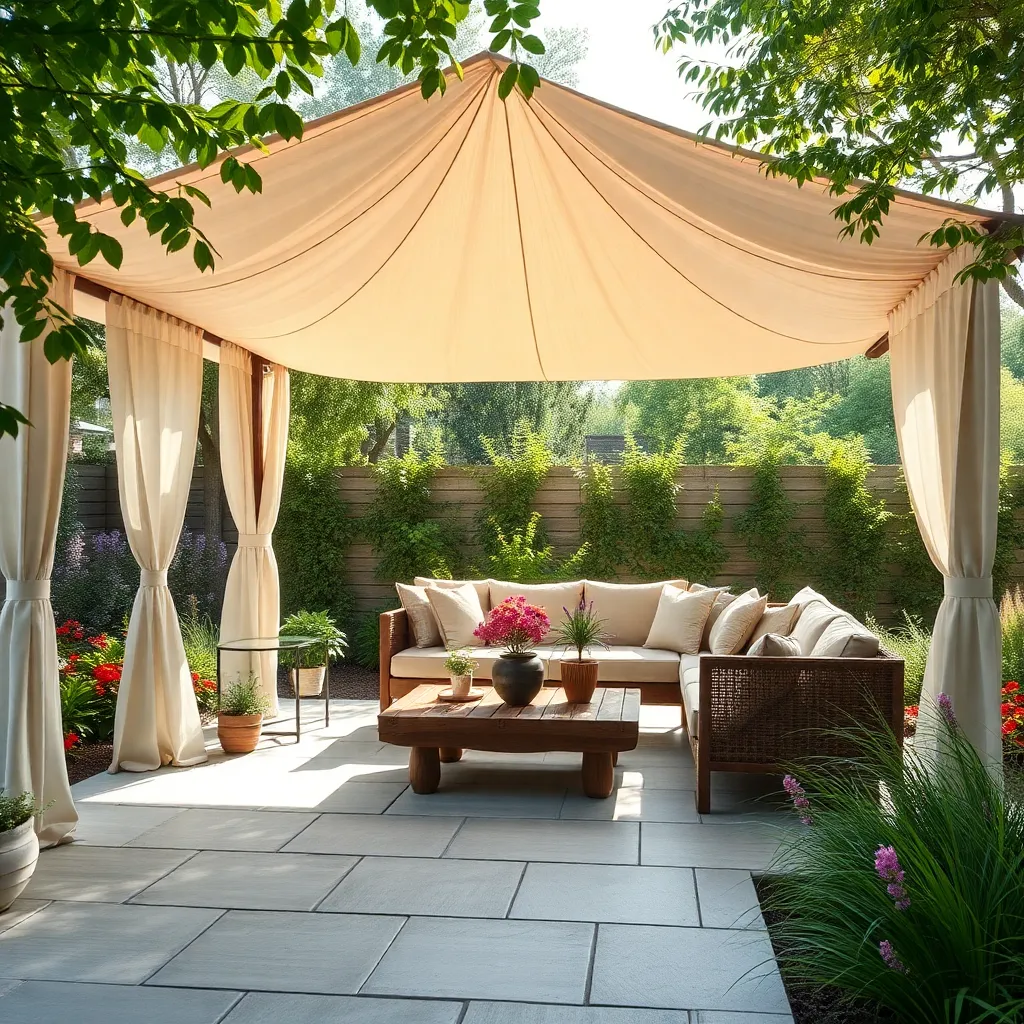
Freestanding canopy structures offer a versatile solution for creating shaded retreats in your backyard. These structures can be installed without the need for wall attachments, making them ideal for open spaces. Opt for materials like durable aluminum frames and weather-resistant fabrics, such as polyester or acrylic, to ensure longevity against the elements. For a basic setup, consider a canopy with adjustable legs for easy relocation, while advanced gardeners might explore custom designs with integrated lighting or retractable roofs for added functionality.
When designing your freestanding canopy, think about the intended use and size. A standard 10×10-foot canopy provides ample space for a small dining set, while larger structures can accommodate outdoor living rooms or kitchens. Enhance your canopy’s aesthetics by incorporating decorative elements like curtains or planters, which not only beautify but also provide additional privacy. To secure your structure, use anchor kits or weighted bags, particularly in areas prone to strong winds, ensuring your canopy remains stable year-round.
Design with Natural Plant Coverings
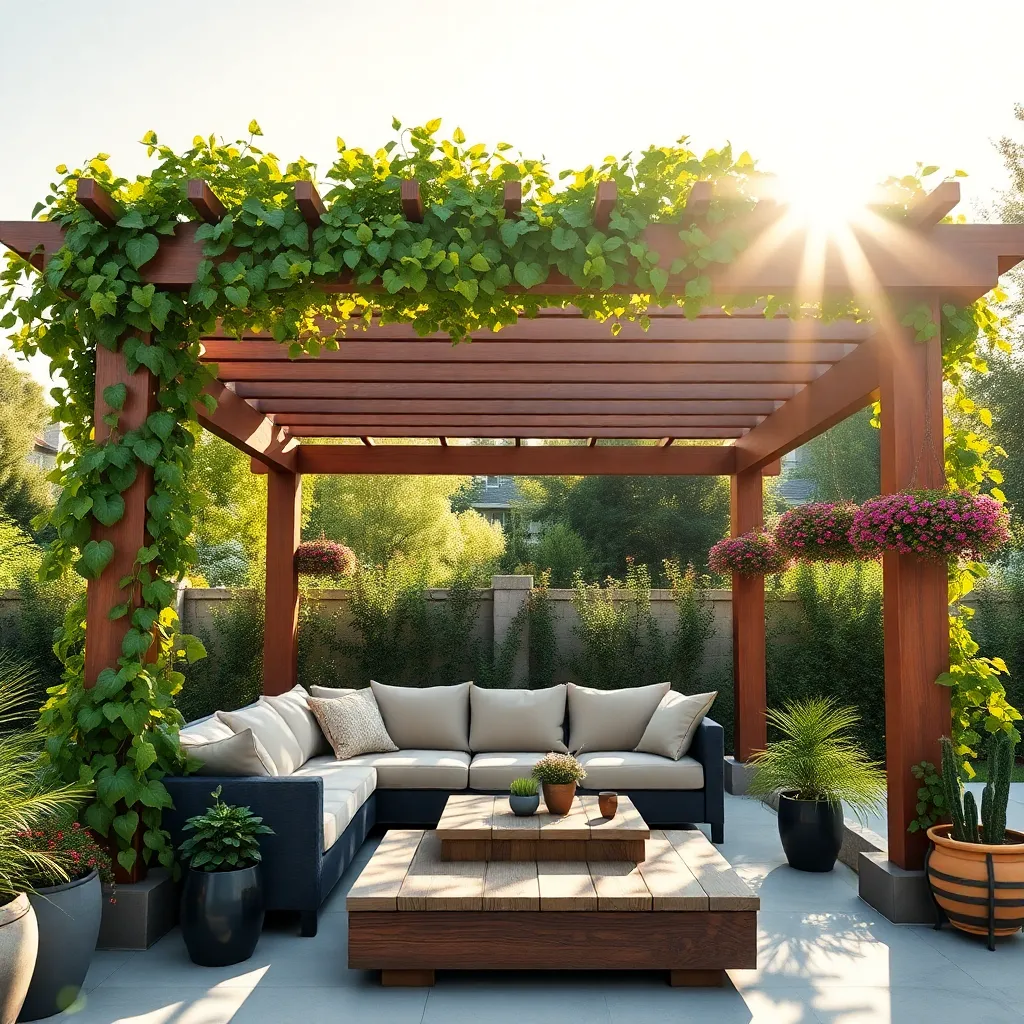
Designing with natural plant coverings offers a beautiful and eco-friendly way to create shade in your backyard. Start by selecting fast-growing climbing plants like wisteria, trumpet vine, or honeysuckle, which can swiftly cover your structure. Construct a sturdy framework using treated wood or metal, ensuring it can support the weight of mature plants. Position the structure near a seating area or pathway to maximize its utility and aesthetic appeal.
For beginners, consider using a simple trellis or pergola as a base for your plants. More experienced gardeners might experiment with weaving vines through wire grids for intricate designs. Choose plants that thrive in your climate and regularly prune them to maintain shape and encourage healthy growth. To add an advanced touch, integrate varying plant species to achieve a layered, textured look that changes with the seasons.
Install Solar-Powered Canopy Lights
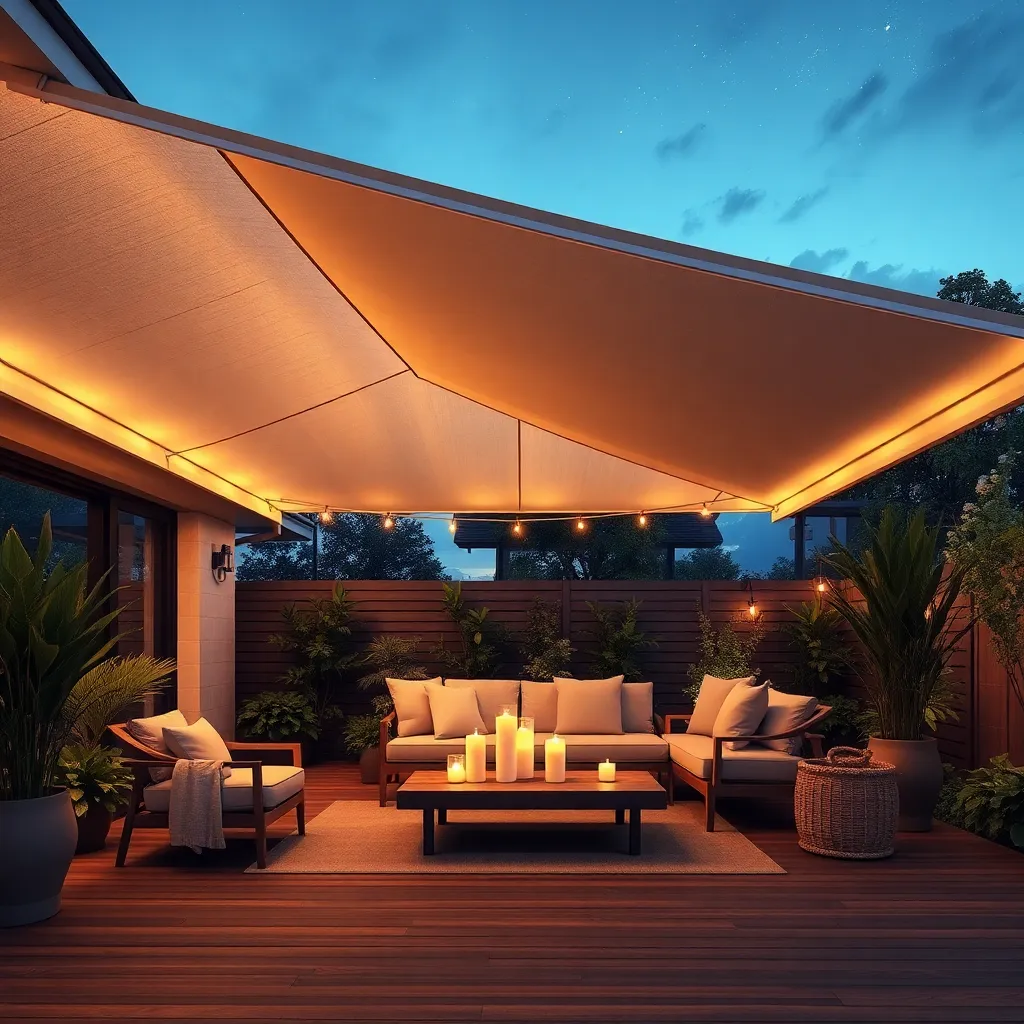
Enhance your backyard canopy by installing solar-powered lights, which can transform your outdoor space into a warm and inviting area after the sun sets. Solar lights are an eco-friendly and cost-effective solution that require no electrical wiring, making them ideal for canopy structures. To get started, choose lights designed for outdoor use, such as string lights or lanterns, which can be easily attached to the canopy frame using clips or hooks. Opt for lights with adjustable panels to ensure they capture maximum sunlight during the day for optimal nighttime illumination.
For more advanced setups, you might consider integrating a solar panel system directly onto the canopy roof. This setup can power multiple light fixtures or other outdoor appliances, providing versatility and convenience. Proper placement is crucial; ensure the solar panels have full sun exposure for at least six hours daily for efficient charging. When selecting light fixtures, consider models with automatic on/off sensors for hassle-free operation. Not only will this enhance your outdoor ambiance, but it will also boost the functionality of your backyard space.
Opt for Retractable Canopy Systems
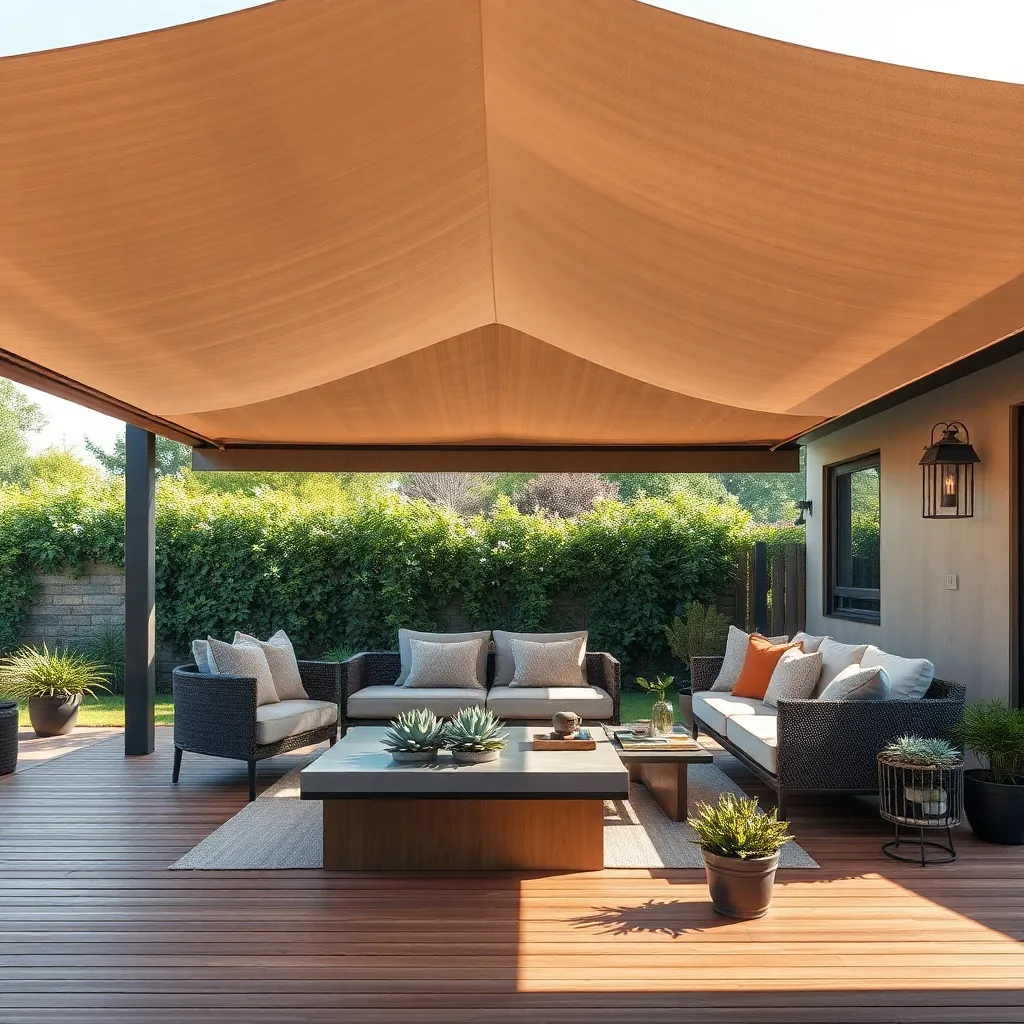
Retractable canopy systems are a versatile solution that provides flexible shade and protection from the elements. They are perfect for patios and decks, allowing you to enjoy sunlight when you want it and shelter when you need it. Look for canopies made from durable materials like UV-resistant polyester or acrylic fabric, which are designed to withstand outdoor conditions. Consider motorized retractable systems for ease of use, especially if you plan to cover large areas or want a convenient, tech-savvy addition to your backyard.
To ensure a successful installation, choose a system that fits your space’s dimensions and consider the existing architectural style of your home. Measure your space carefully to ensure the canopy will provide adequate coverage when extended. For those ready to dive into DIY projects, kits are available that include all necessary components and detailed instructions. More advanced users might explore integrating weather sensors that automatically retract the canopy during high winds or rain, offering both convenience and protection for your investment.
Create Multi-Level Canopy Layers
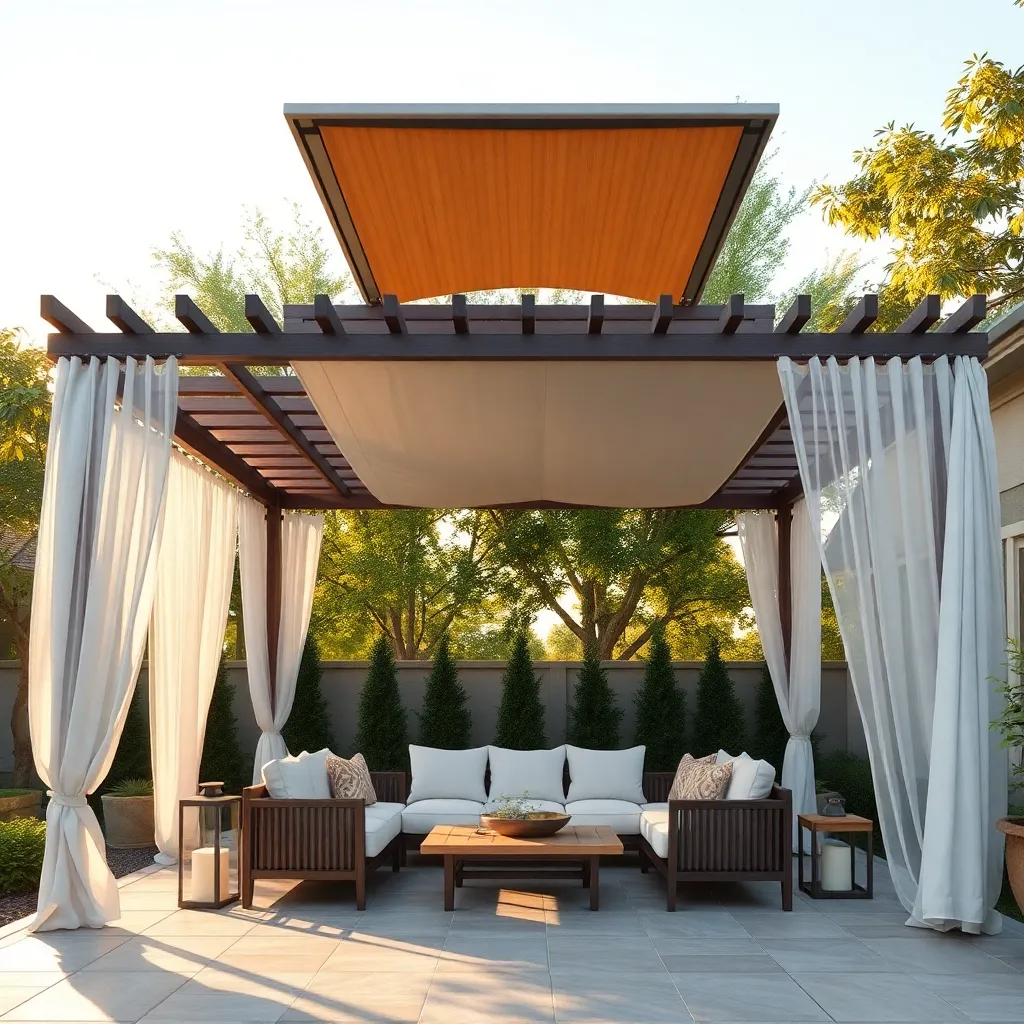
Creating multi-level canopy layers in your backyard adds depth and visual interest while providing practical shade solutions. Begin by installing a primary structure using durable materials like wooden beams or metal frames, and then layer lighter materials, such as weather-resistant fabric or bamboo slats, to create distinct levels. **Experiment with different heights and angles** to allow for varied light and airflow, ensuring a dynamic outdoor space.
For a beginner-friendly approach, start with a simple pergola and enhance it with climbing plants like wisteria or grapevines to form a natural top layer. More advanced gardeners can incorporate suspended panels or lattices to add dimension and adjust the microclimate beneath. **Ensure each layer is securely attached** and consider using modular components for easy customization and maintenance. This layered design not only enhances aesthetics but also maximizes comfort in your outdoor sanctuary.
Anchor Canopies with Sturdy Bases
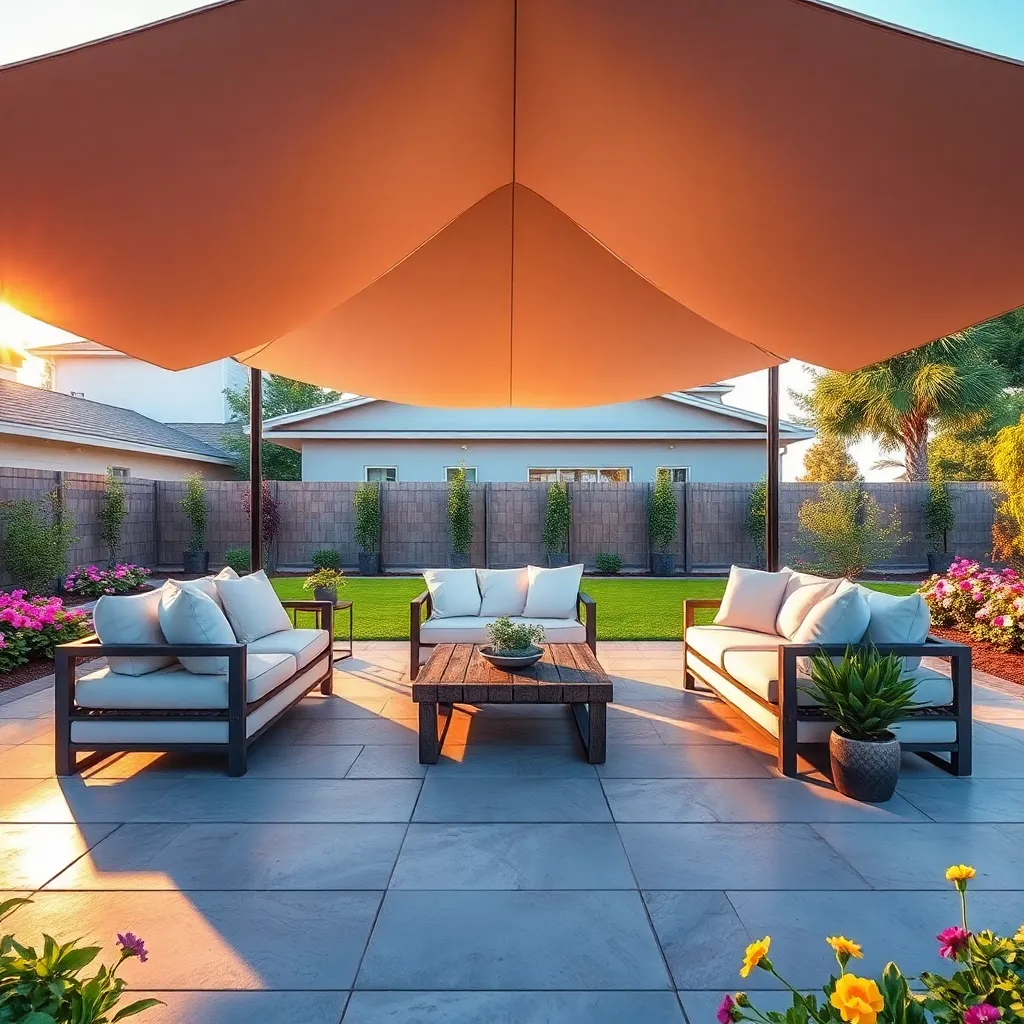
To ensure your backyard canopy withstands the elements, it’s crucial to anchor it with sturdy bases. Start by selecting durable materials such as steel or reinforced aluminum for the frame, which offer excellent resistance to wind and weather. For beginners, consider using pre-cast concrete weights or heavy-duty sandbags to secure each leg of the canopy. This approach provides a quick and reliable setup, perfect for temporary installations.
For a more permanent solution, experienced gardeners might opt to bolt the canopy legs to concrete footings. This involves pouring concrete bases at each corner, ensuring they are at least 12 inches deep to provide the necessary stability. Using anchor bolts in the setting process will allow for a secure attachment, keeping your canopy firmly in place. This method requires some DIY skills but results in a highly durable shelter that can withstand even the most unpredictable weather conditions.
Select Color Schemes for Ambiance
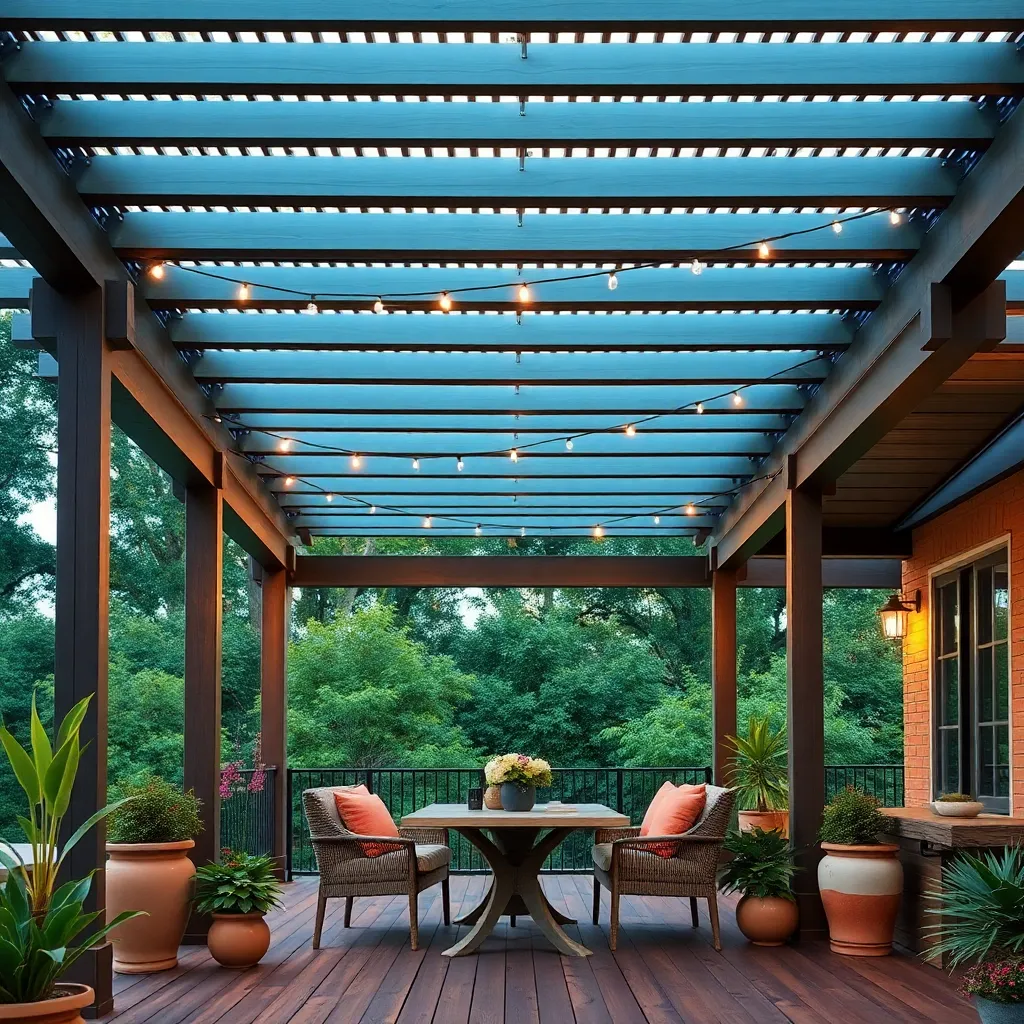
Creating the right ambiance under your backyard canopy starts with selecting a color scheme that complements your outdoor space. Consider neutral tones like beige, gray, or soft white for a calming atmosphere that blends seamlessly with natural surroundings. For a more vibrant look, incorporate accent colors like deep blue or terra cotta through cushions or throw blankets. These hues not only add personality but can also be easily swapped as trends change, making them a versatile choice for both beginners and seasoned decorators.
When choosing materials, opt for UV-resistant fabrics to ensure your colors remain vivid and inviting throughout the seasons. A mix of textures, such as combining a canvas canopy with wooden or metal elements, can add depth and interest to your design. For advanced tips, consider integrating lighting elements like solar-powered string lights or lanterns that match your color palette, enhancing the ambiance even after the sun sets. This approach allows you to create a cohesive look that feels both intentional and welcoming.
Integrate Built-In Seating Options
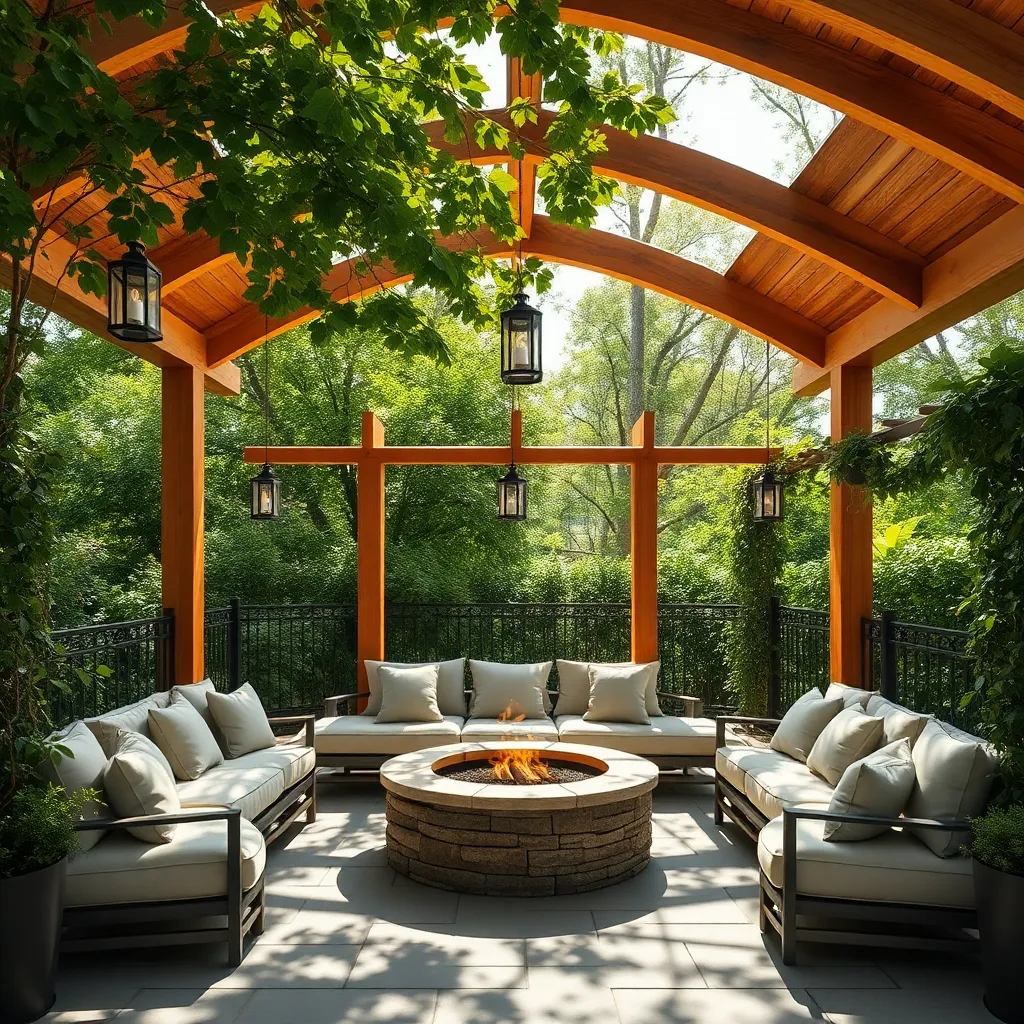
Incorporating built-in seating into your outdoor canopy design can significantly enhance both functionality and aesthetics. Consider using durable materials like teak, cedar, or weather-resistant composites that can withstand various climates. For a beginner-friendly option, construct simple wooden benches along the perimeter of your canopy area. These can be easily customized with colorful cushions to match your chosen ambiance.
For those with more experience, exploring curved or multi-level seating designs can add a sophisticated touch. Integrating storage within your seating is a smart way to maximize space; include hinged bench tops to store outdoor essentials. Ensure that your seating is proportionate to the canopy size—aim for a depth of 18-20 inches for comfort. By thoughtfully selecting materials and layouts, your built-in seating can become a seamless extension of your outdoor retreat.
Conclusion: Creating Beautiful Outdoor Spaces
In exploring the ’11 Backyard Canopy Ideas for Your Next Project,’ we unveiled a rich tapestry of relationship concepts disguised as outdoor enhancements. From the importance of creating a shared space with pergolas and the intimacy of string lights, to the trust-building exercise of DIY projects and the nurturing aspect of garden canopies, each idea underscored a crucial element of a thriving relationship. We discussed the significance of commitment with permanent structures, the adaptability of retractable awnings, and the refreshing change that a portable gazebo can offer. These concepts serve as a metaphorical blueprint for constructing stronger, more resilient bonds.
As an actionable next step, choose one canopy idea to explore together as a couple this weekend. Whether it’s a simple setup of fairy lights or planning a larger project, use it as an opportunity to connect and communicate.
Remember, nurturing your relationship is an ongoing journey, and these canopy ideas can serve as both literal and figurative shelters in your shared life. Bookmark this article for future inspiration, and revisit it whenever you need a reminder of how simple changes can enhance your connection. Embrace these insights, and watch as your relationship flourishes under the canopy of love and understanding.
